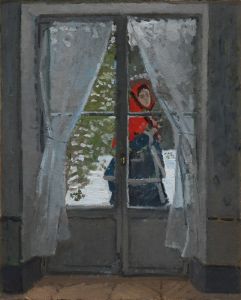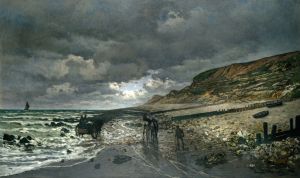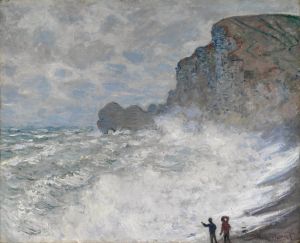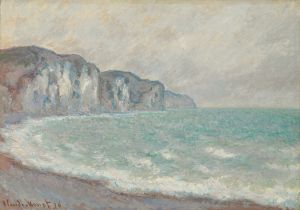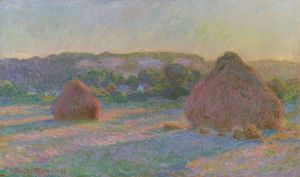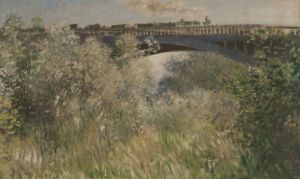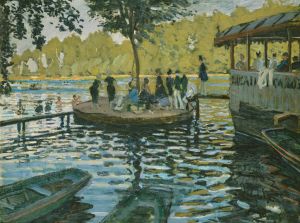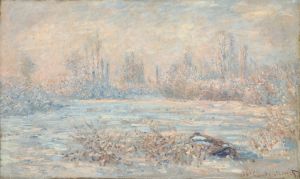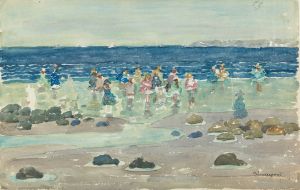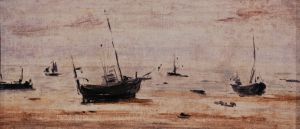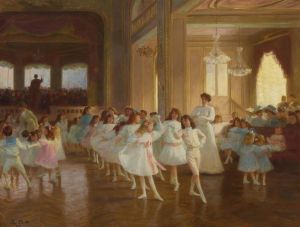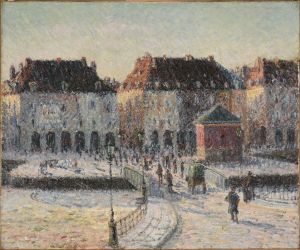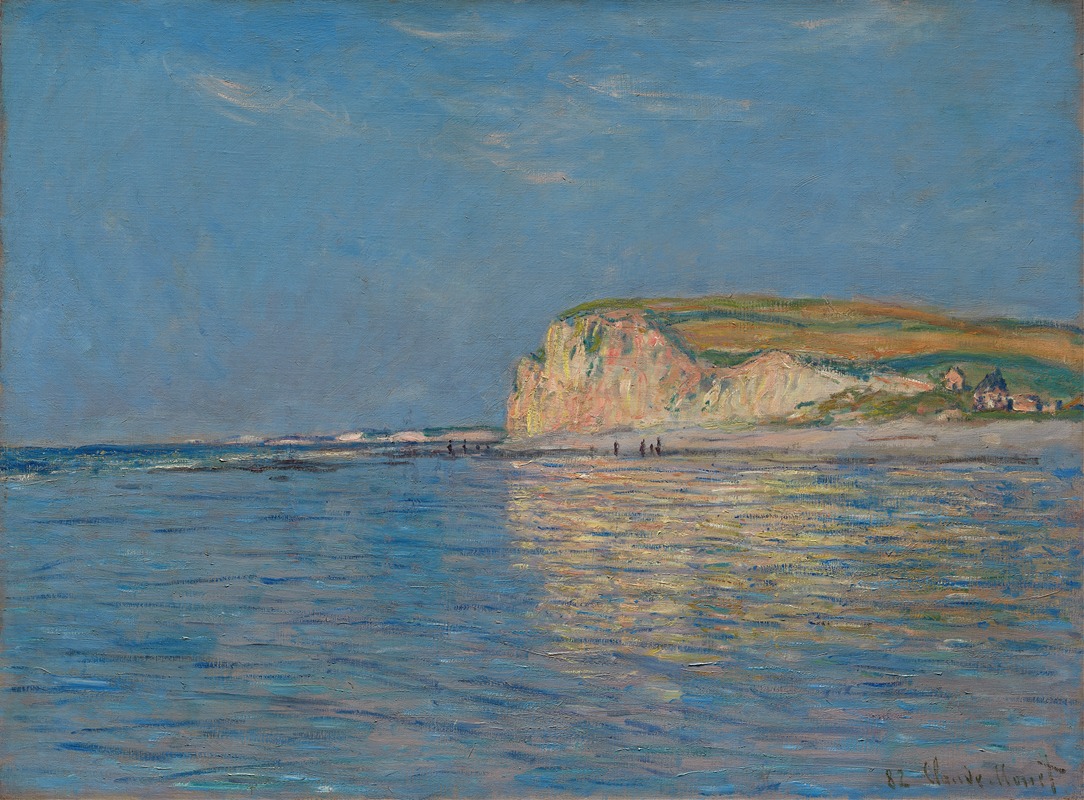
Low Tide at Pourville, near Dieppe, 1882
A hand-painted replica of Claude Monet’s masterpiece Low Tide at Pourville, near Dieppe, 1882, meticulously crafted by professional artists to capture the true essence of the original. Each piece is created with museum-quality canvas and rare mineral pigments, carefully painted by experienced artists with delicate brushstrokes and rich, layered colors to perfectly recreate the texture of the original artwork. Unlike machine-printed reproductions, this hand-painted version brings the painting to life, infused with the artist’s emotions and skill in every stroke. Whether for personal collection or home decoration, it instantly elevates the artistic atmosphere of any space.
Low Tide at Pourville, near Dieppe is an oil painting created in 1882 by the French Impressionist artist Claude Monet. This artwork is part of Monet's extensive exploration of coastal landscapes, a subject that fascinated him throughout his career. The painting depicts the shoreline near Pourville, a small village on the Normandy coast of France, during low tide. The scene captures the interplay of light, water, and land, which are hallmarks of Monet's Impressionist style.
Monet visited Pourville in 1882 during one of his frequent trips to Normandy, a region he often painted due to its dramatic coastal scenery and changing weather conditions. Pourville, located near the town of Dieppe, provided Monet with a variety of picturesque views, including cliffs, beaches, and the sea. These elements are prominently featured in Low Tide at Pourville, near Dieppe, where the artist skillfully portrays the expansive shoreline and the receding tide.
The painting is characterized by its loose brushwork and vibrant use of color, techniques that Monet employed to convey the fleeting effects of light and atmosphere. The composition features a wide expanse of beach in the foreground, with the tide pulling back to reveal wet sand and scattered rocks. The middle ground transitions to the calm sea, while the horizon is marked by soft, hazy cliffs. Monet's palette includes earthy tones for the sand, cool blues and greens for the water, and subtle pastels for the sky, creating a harmonious and tranquil scene.
Low Tide at Pourville, near Dieppe reflects Monet's dedication to painting en plein air, or outdoors, which allowed him to observe and capture the natural environment directly. This approach was central to the Impressionist movement, which sought to depict the transient effects of light and atmosphere rather than rigid, detailed representations. Monet's ability to convey the essence of a moment is evident in this work, as he captures the serene beauty of the Normandy coast during low tide.
The painting is part of a series of works Monet created during his time in Pourville, each offering a unique perspective on the area's landscape and changing conditions. These works demonstrate Monet's fascination with the sea and his mastery of rendering its many moods and textures.
Today, Low Tide at Pourville, near Dieppe is recognized as an important example of Monet's coastal paintings and his contribution to the Impressionist movement. The painting is housed in the Art Institute of Chicago, where it remains a celebrated piece in the museum's collection.





